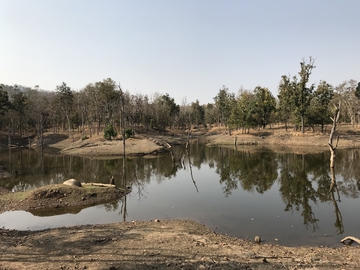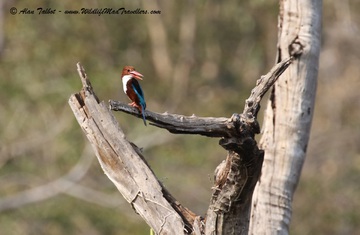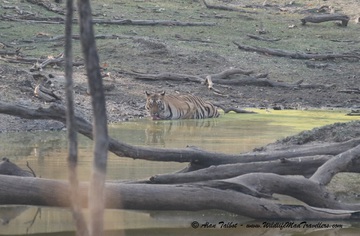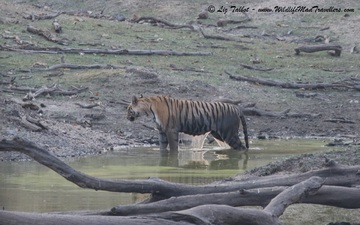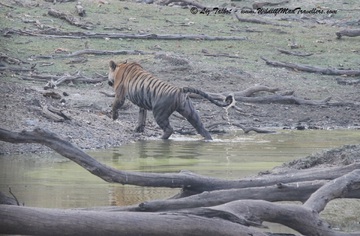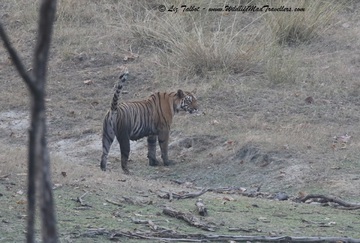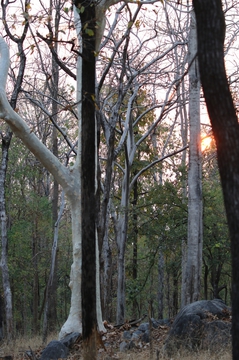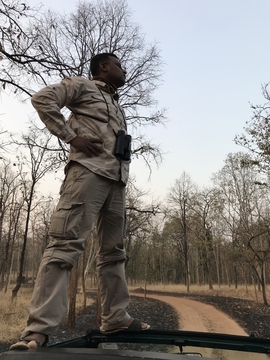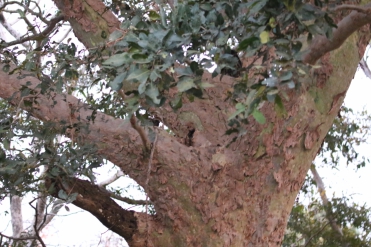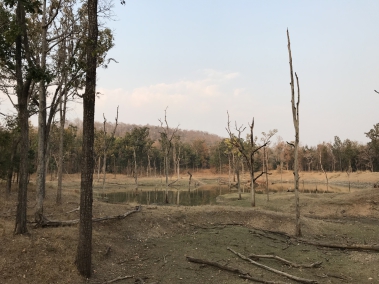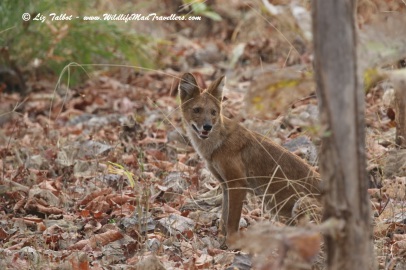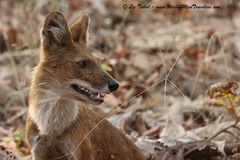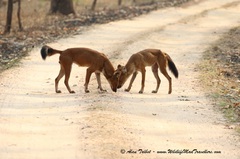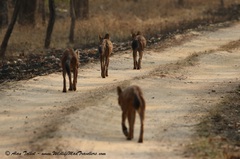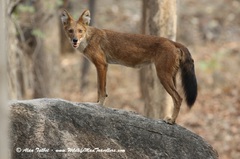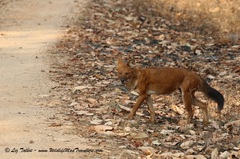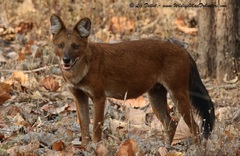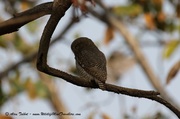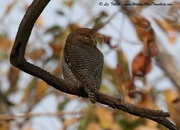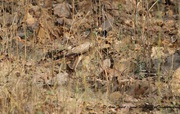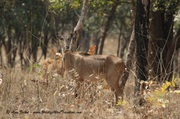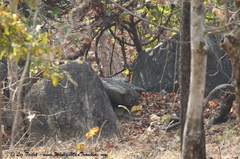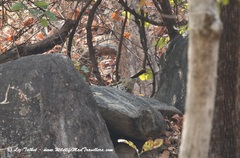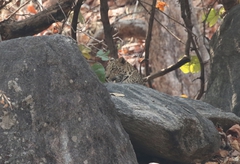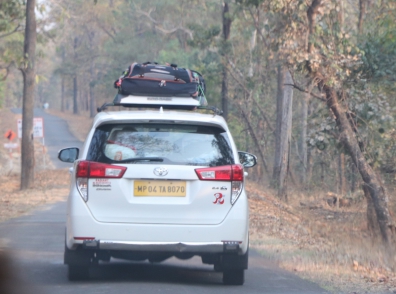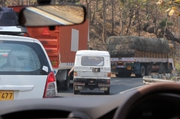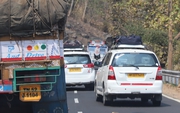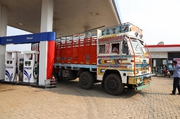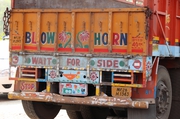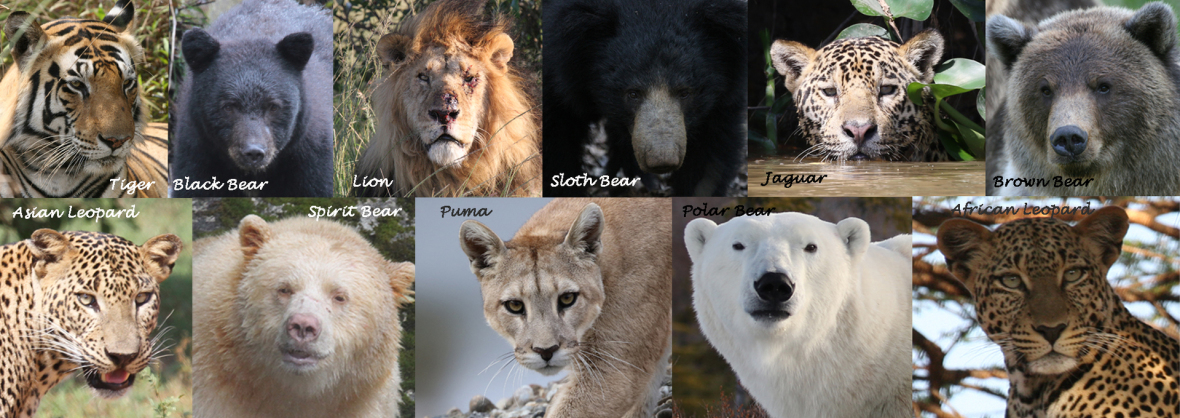

Indian Wildlife - Trip Report - Day 7 continued...
Drive 8 - Afternoon
For Pench drives you are allocated a ‘Route’ – 1, 2 or 3. The park guides carry GPS trackers and you must stick to your designated route until the end of it, you can then divert to another area but you must return to the park gate along a different route to the one you entered along. For our morning drive we were on route 2 for our afternoon drive we were on route 1.
This afternoon we would be looking for a leopard in the rocky terrain along route 1. We sat for ages listening to langur alarm calls. We saw a jeep reversing, and they informed us that they had seen a Leopard going into the forest. As we waited we heard distress calls from the other side, so we followed the calls. Only Alan, Yusuf and the driver managed to see the leopard in the distance before it vanished.
Later we checked Bija matta waterhole. As we reached the spot we saw a tigress sitting in the waterhole. She was quite relaxed and stayed in the water for almost 30 minutes occasionally looking at us (she was a good distance from us on the far side of the waterhole). Eventually she got up and walked up the far bank shaking the water off each paw in turn as she went! Tiger number 12 of the trip.
More alarm calls, were heard on the way out of the park, but we didn’t spot anything.
Day 8 - Pench
Drive 9 - Morning
For our last drive in Pench we were on Route 1 again and we started with looking for leopards, we heard distress / warning calls from spotted deer and langur monkeys, but the leopard or tiger causing them stayed hidden.
Our group decided we wanted to do more looking for other wildlife so explored a bit more of Pench and saw ibis, tree pie, flame backed woodpeckers, jackals, palm squirrel, jungle fowl and wagtail.
To our delight we also found a pack of wild dogs! Much better than our last encounter with them, in 2009 we had a fleeting glimpse of them in Kanha, as they ran by our vehicle. This time they stayed still long enough to pose for us, one even jumped up onto a rock. We followed them up the road until they diverted back into the forest.
The Indian wild dog or Dhole is also known as red dog or whistling dog. They are listed as an endangered species due to habitat loss. They have great communication skills with their pack using a combination of growls, whistles, screams and clucks. I can remember hearing them whistling to each when we saw them in Kanha. Unlike other members of the family of dogs, dholes have a unique number of teeth, only 40 teeth (other dogs have 42 teeth). They are not very fast runners but like hyenas they have high endurance and the ability to chase for hours until they simply tire out their prey. They may not run fast but they sure can jump, higher than 2 metres (7 feet).
After our packed breakfast we set out for the rest of our drive where we saw more birds and a female blue bull, its Indian name ‘nilgai’ translates to blue cow. Standing 1–1.5 metres (3.3–4.9 ft) at the shoulder it is the largest Asian antelope. Males have a blueish-grey coat and females and their young are orange to tawny in colour.
We got news of a leopard being seen along Route 1. We drove quickly to the spot and saw a male leopard lying on a rock. There were already several vehicles watching it, but they were very good and took it in turns moving down to allow all to get a decent view of it. It never completely got up while we watched it but it did look around behind and towards us before going back to sleep again.
As the leopard was on Route 1 we had to head back in to the lodge going a different route. One of our group’s vehicles were able to continue along Route 1 and a just bit further along they saw a leopardess with two sub-adult cubs.
Leaving Pench and onwards to Kanha
Pench had proved itself, it showed us it has tigers, leopards and wild dogs! For reasons unknown, most tours only have two nights staying near to Pench giving at most 4 drives in the park (we had 3). I truly believe it has a lot to offer and recommend staying at least 3 nights to give you the best opportunities to see what it has to offer.
After an early lunch it was time to pack up and start our drive to Kanha. Leaving at 1pm we made one stop along the way at a petrol station.
Below are a few photos of what the roads were like. The standard of surface of the main road network is excellent, so the ride quality is good… that would be if it wasn’t for all the sudden braking! All of us said we would never want to drive in India, you need balls of steel when approaching a junction or overtaking. Politeness wouldn’t work here, blow your horn and go for it, which is totally alien to us. But it seems to work, we saw very little damage to vehicles and the only crashes we saw were where trucks had rolled over from taking a turn to quickly or a badly distributed load. Still, it was stressful at times when your driver insisted on overtaking with no visibility of oncoming traffic ahead and you were met with a truck coming head on towards you!
We arrived at Kanha Jungle Lodge just before 6pm and were greeted with the usual drink and flannel (actually the welcome drinks were better here than the other lodges, the fruit juices were really flavoursome and not watered down). We had some fresh out the oven cake as we received our welcome to the lodge, which included an unwelcome welcome from the local mosquitoes (the only time we were bitten).
We went for dinner at 8pm and Alan wasn’t feeling well so he left early to return to the room.
